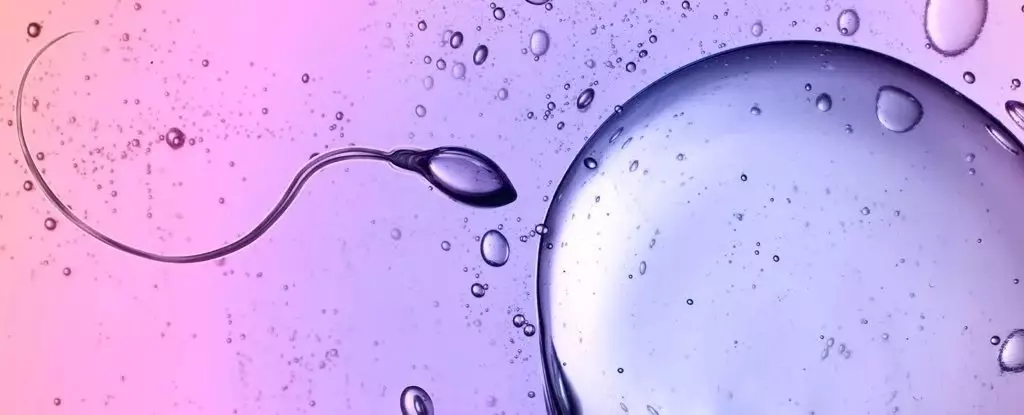In an astonishing twist of fate for both science and biology, a recent exploration into the motility of human sperm reveals that these microscopic entities defy the well-known principles articulated by Sir Isaac Newton over three centuries ago. When we think of motion, Newton’s laws serve as an immutable framework, a bedrock of classical mechanics that offers a tidy, predictable lens through which we view physical interactions. But just as science evolves, so too must our understanding of these erstwhile sacred rules. Led by Kenta Ishimoto, a team at Kyoto University has shattered the compliant narrative of Newton’s third law, showcasing how living organisms like sperm navigate fiercely viscous environments with extraordinary dexterity.
In essence, Newton’s third law conveys a world of symmetry—every action has an equal and opposite reaction. For macroscopic entities like marbles on a table, this seems intuitive. But when we descend into the microscopic realm, where life’s more complex agents operate, Newton’s laws begin to crumble. The idea that sperm cells can glide effortlessly through thick fluids should elicit skepticism; after all, logic dictates that increased viscosity should hinder movement. Yet, Ishimoto’s team has uncovered how living systems can exploit asymmetries that challenge conventional thought, raising a provocative question: if life can bend the rules, what else have we overlooked in our scientific dogmas?
The Dance of Non-reciprocal Motion
What’s particularly enthralling is the concept of non-reciprocal interactions. Unlike inanimate objects, biological swimmers can harness energy to create propulsion—an action that alters the very nature of their surroundings. The realization that these entities manipulate the reactive properties of their environments revolutionizes our understanding of fluid dynamics. Unruly systems, rife with unique interactions between the swimmer and their medium, paint a picture of life that refuses to conform to stringent physical laws. Traditional physics teaches us about harmony and symmetry, yet nature bursts forth with chaos, redefining our comprehension of action and reaction.
The implications extend beyond mere biological curiosity; the implications resonate throughout our understanding of life and its mechanics. Ishimoto’s research sheds light on how these biological swimmers, such as sperm and Chlamydomonas (a type of green algae), employ flexible flagella—thin, whip-like appendages—that are key to their remarkable motility. Their wave-like undulation belies conventional laws of movement and challenges our understanding of energy dissipation in viscous media.
Odd Elasticity: A Key to Survival
Enter the concept of ‘odd elasticity,’ a coveted trait that these sperm and algae exhibit. Surprising as it may be, this unique elasticity allows these flagella to move through the dense fluid while minimizing energy loss—an evolutionary advantage worth its weight in gold. The study elucidates not just the mechanics of swimming but the survival tactics of world’s tiniest organisms in their struggle to procreate and thrive.
But their findings do not end there. The researchers proposed a new term—an “odd elastic modulus”—signifying the internal mechanics of these flagella. This complexity speaks volumes about the layered intricacies of biological systems and hints at a future where we may leverage such insights to innovate in fields as varied as materials science and robotics.
Impacts on Technology and Collective Behaviors
The research led by Ishimoto opens gateways to a myriad of applications. Imagine small, self-assembling robots echoing the principles of biological systems. Think of swarms of micro-robots, channeling the efficient swimming styles of sperm or algae to navigate through the most challenging terrains. The implications on collective behavior can stretch to everything from environmental studies to advanced engineering. Understanding how these organisms work in harmony could guide not just the design of new technologies but also add depth to our comprehension of cooperative dynamics in larger populations.
As we stand on the precipice of a new era in biology and technology, the implications of Ishimoto’s study ripple outward. The unexpected behaviors elicited by their findings challenge us to re-envision nature’s capabilities and, ultimately, reconsider the frameworks we thought were immutable. In doing so, we’re reminded that in the wild dance of life, even the smallest entities can teach us significant lessons about resilience, adaptation, and the art of defiance against the odds.

